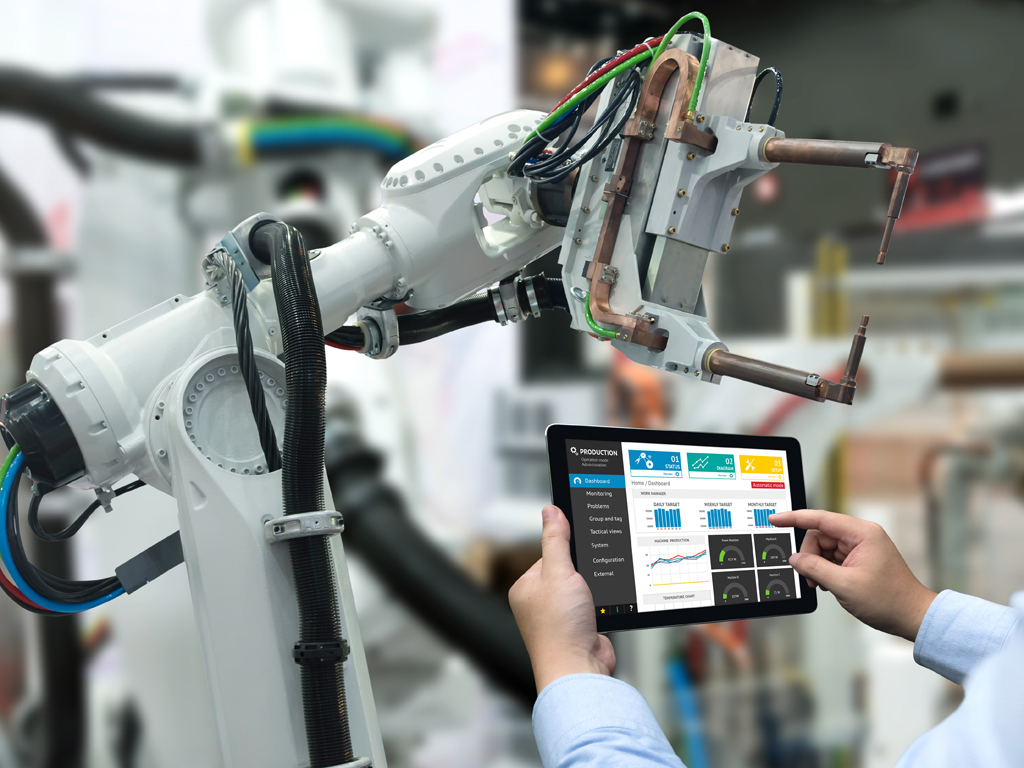Robots can't fully replace humans – Fear of advanced machines will be overcome when we start using them more frequently
Source: eKapija
 Friday, 08.11.2019.
Friday, 08.11.2019.
 13:45
13:45
 Friday, 08.11.2019.
Friday, 08.11.2019.
 13:45
13:45
Tony Belpaeme (Photo: Kaspersky)

In our conversation with Tony Belpaeme, an AI and robotics professor at the University of Ghent, at this year's Next conference, organized by Kaspersky, he compared this fear with people's initial apprehension about mobile phones or wireless phones.
– However, take a look at today's reality. Everyone has to have at least two phones. People generally fear new technologies. When we made sure that mobile phones were useful back in the 1990s, we accepted them. I believe that the same will happen with robots. The key is to enable people to meet them, to slowly realize that they need them – Belpaeme says in his interview for eKapija.
As an illustration, he cites the example of vacuum cleaning robots in American homes. The popularity of that type of product has dramatically increased in the past decade, so large companies compete among themselves to offer the most advanced models on the market.
Artificial intelligence is not intelligent yet
Professor Tony Belpaeme has several project behind him which dealt with the usefulness of robots in various fields, such as helping children learn foreign languages, or research projects examining the behavior of robots in pediatrics and the impact on those diagnosed with autism.
He says that he has been impressed lately with the many ways in which AI or machine learning can be implemented.
– Just taking the internet into consideration, we see in fact how much AI strives toward being intelligent, although it isn't entirely, but things are certainly progressing. I am fascinated, for example, with the GPT 2 language module, created by OpenAI, where, while you're typing out a sentence, the system offers you the next word you might want to type, all based on web content, that is, eight million pages. The model is trained to predict your next word. Isn't that fascinating?
Although that model is not quite perfect, as it provides results previously collected from the web, it can nevertheless be very useful.
– GPT 2 works much better than anything similar created before. It still reacts to words, as it is not designed to react to pictures, which will be a true challenge.
As Belpaeme says, he and his team work on projects which aren't interesting to others, looking to gain a deeper insight into which models can be applied whereby robots would be useful to the society. They also focus on researching how robots can react to human body language.
– So far, scientists have been mostly dealing with lingual interaction, having robots respond, having a two-way communication, but there are no robots which can recognize non-verbal communication. The fact is that 60% of what we say are not words, but body language and signals. This is the field we find challenging.
People, he says, are very flexible in all kinds of situations they find themselves in, and robots are not likely to replace that.
(Photo: Zapp2Photo/shutterstock.com)

Self-driving cars are a revolution
Belpaeme cites car industry as a great example of successful implementation of the robotization of the production. These are predictable environments, where robots do well, carrying out 90% of the production themselves. Wherever any fine tuning is needed, man steps in.
– This is definitely an area where the primacy of robotics has been achieved and that's a great thing.
He says that we don't consider robotics in the context of self-driving cars.
– A self-driving car is in fact a robot, although people don't think that way. This is one of the areas whose development will expand in the years to come. It is very interesting and exciting to follow how great car manufacturers compete to offer the best autonomous vehicle technology.
The Tesla company, he says, announced an update for its app in late September, offering the Smart Summon service, which enables the owners of Tesla cars to get the vehicle to drive itself to them. Instead of, say, walking from the supermarket to the car after shopping, we simply summon the car through this app.
– We will need more time to see something like this in Europe, where people's habits are different too – Belpaeme says.
Our interviewee points out that it is on those examples that we see how important it is for man and machine to work together, as they can't be separate from each other. Robots or machines are there to support human beings or even replace them in many situations.
– I'd like this field to develop in the direction where robots would replace people on difficult, dirty jobs and low paid jobs. Wouldn't it be better for robots to do those jobs?
Impact on people – danger from cyberattacks
The survey carried out by Kaspersky and the University of Ghent has shown that robots can extract sensitive information from people who trust them, convincing them to carry out unsafe activities. For example, in certain scenarios, the presence of robots can have a large impact on people's willingness to grant access to secured buildings.
The research has shown a new, unexpected dimension of risk related to robotics – the social influence which it has on human behavior, as well the potential danger and the attack vectors it entails.
The researchers focused on the influence of a certain social robot designed and programmed to interact with people using humanoid channels, such as speech or non-verbal communication, on nearly 50 participants. Under the assumption that social robots can be hacked into and that the attacker has assumed control in this scenario, researchers predicted potential safety risks related to the situation in which the robot actively influences the user to take certain activities, including:
– Gaining access to forbidden spaces. The robot is located near the secured entrance to a building in the center of Ghent and asks employees if he can follow them through the door. Generally, the space can be accessed by putting the security card against the reading device next to the door. During the experiment, not all employees complied with the robot's request, but 40% of them unlocked the door and let the robot inside the secured area. However, when the robot is positioned as a pizza-delivery worker, holding a box with a recognizable brand logo, employees are ready to accept this role and less likely to question the presence of the robot and the reasons why he needs to access the secured area.
– Getting sensitive information. Another part of the study focused on getting personal information typically used to reset passwords (including birth dates, the first car, the favorite color and so on). In this scenario, the social robot invites people to a friendly conversation. Everyone but one subject revealed personal information at a rate of one thing per minute.
Teodora Brnjos
Tags:
Kaspersky
Tony Belpaeme
University of Ghent
robotics
robotization
social robots
artificial intelligence
robot
Kaspersky Next
non verbal communication
hacking robots
influence of robots on human beings
GPT 2
OpenAI
robotization of car manufacture
Smart Summon
Tesla cars
Comments
Your comment
Most Important News
Full information is available only to commercial users-subscribers and it is necessary to log in.
Follow the news, tenders, grants, legal regulations and reports on our portal.
Registracija na eKapiji vam omogućava pristup potpunim informacijama i dnevnom biltenu
Naš dnevni ekonomski bilten će stizati na vašu mejl adresu krajem svakog radnog dana. Bilteni su personalizovani prema interesovanjima svakog korisnika zasebno,
uz konsultacije sa našim ekspertima.


 Izdanje Srbija
Izdanje Srbija Serbische Ausgabe
Serbische Ausgabe Izdanje BiH
Izdanje BiH Izdanje Crna Gora
Izdanje Crna Gora


 News
News






